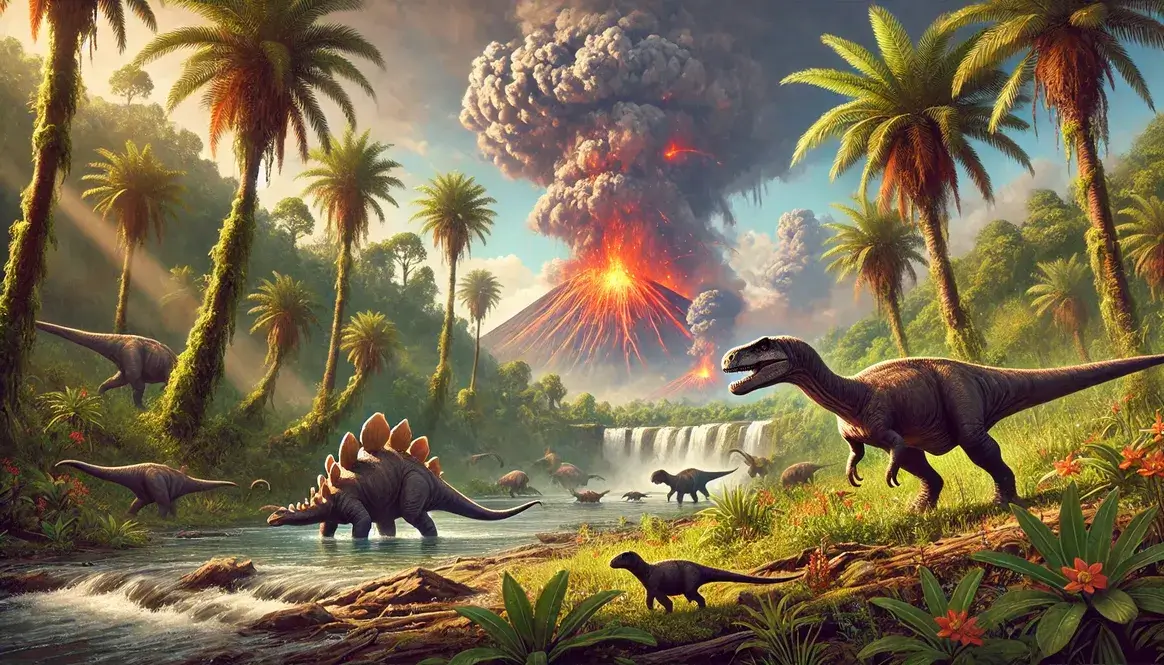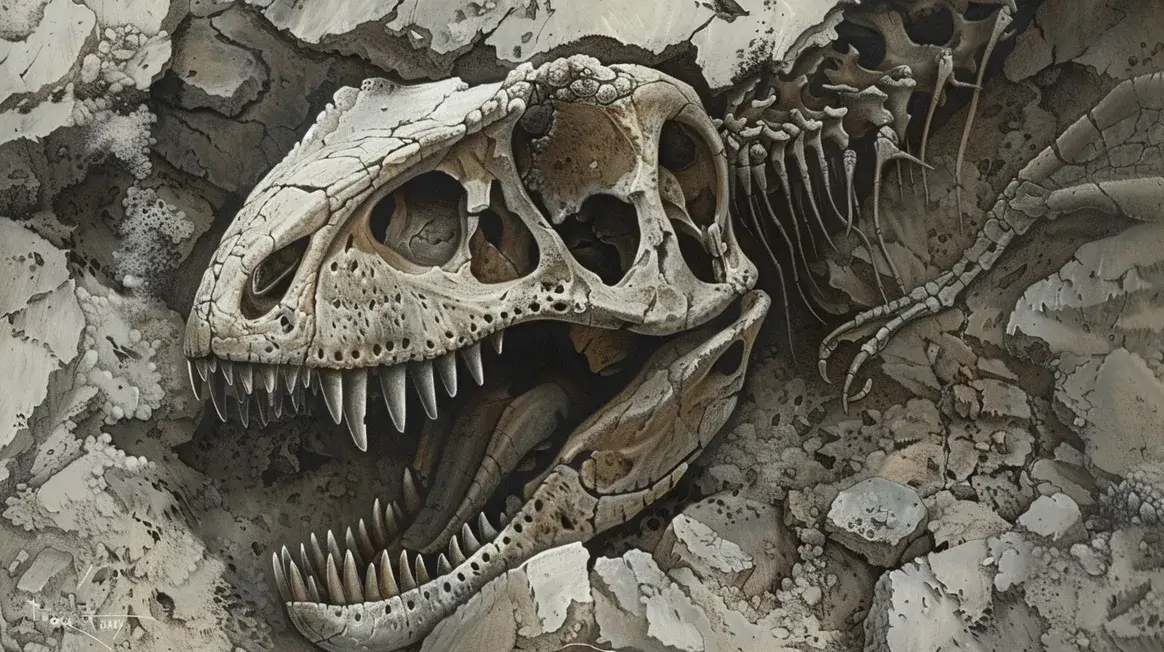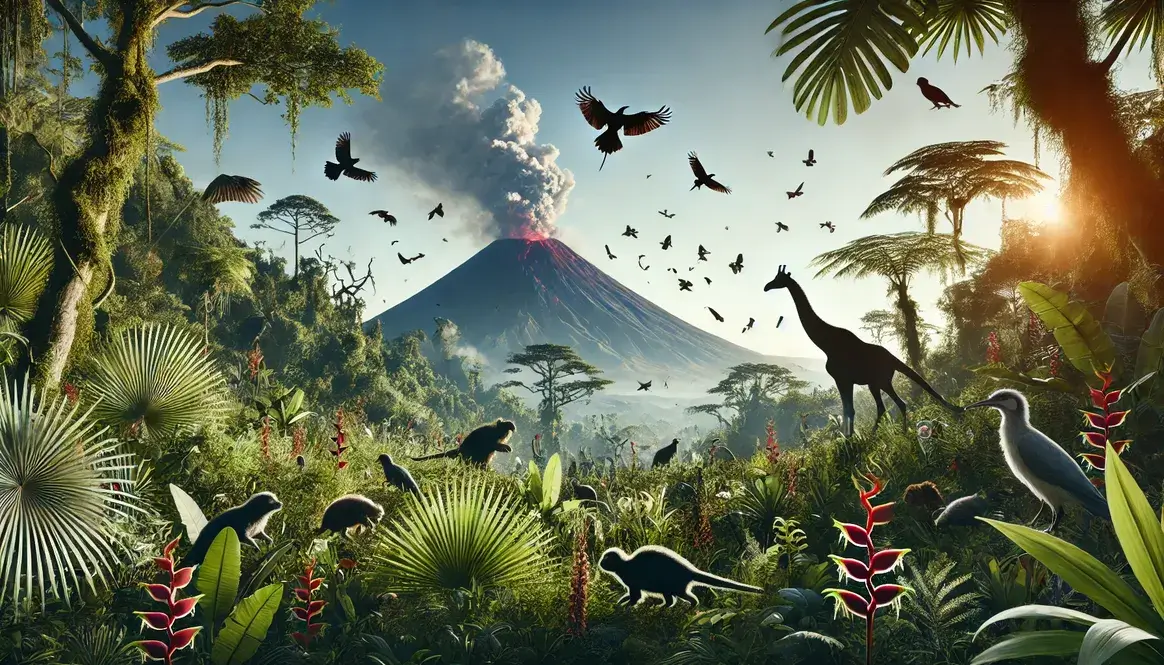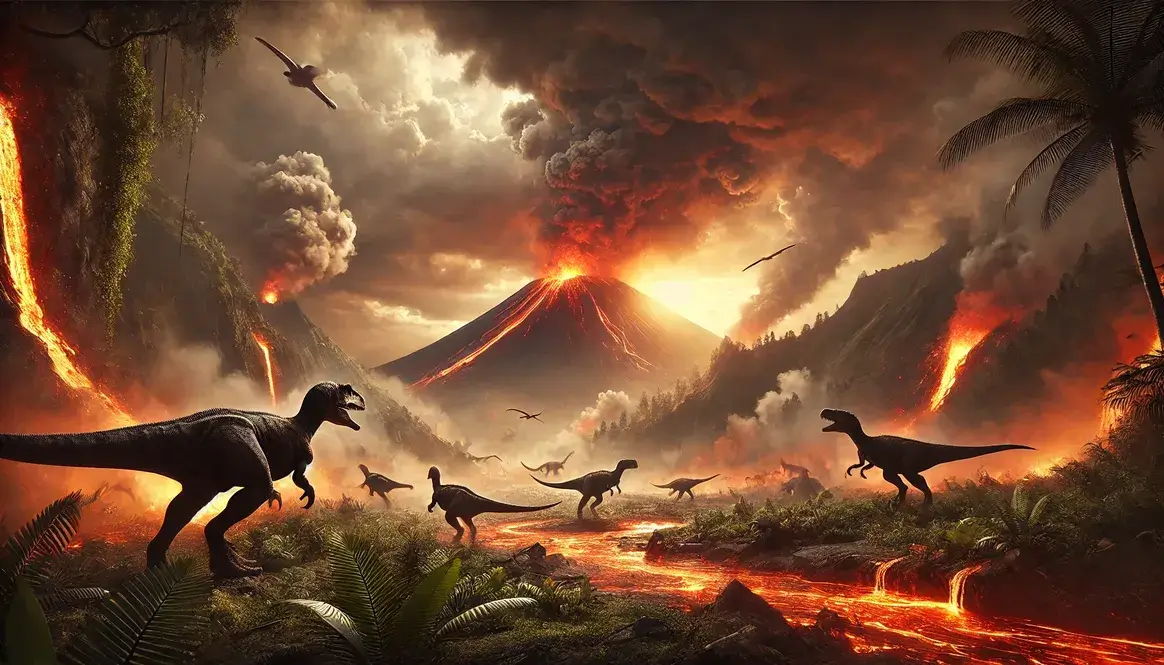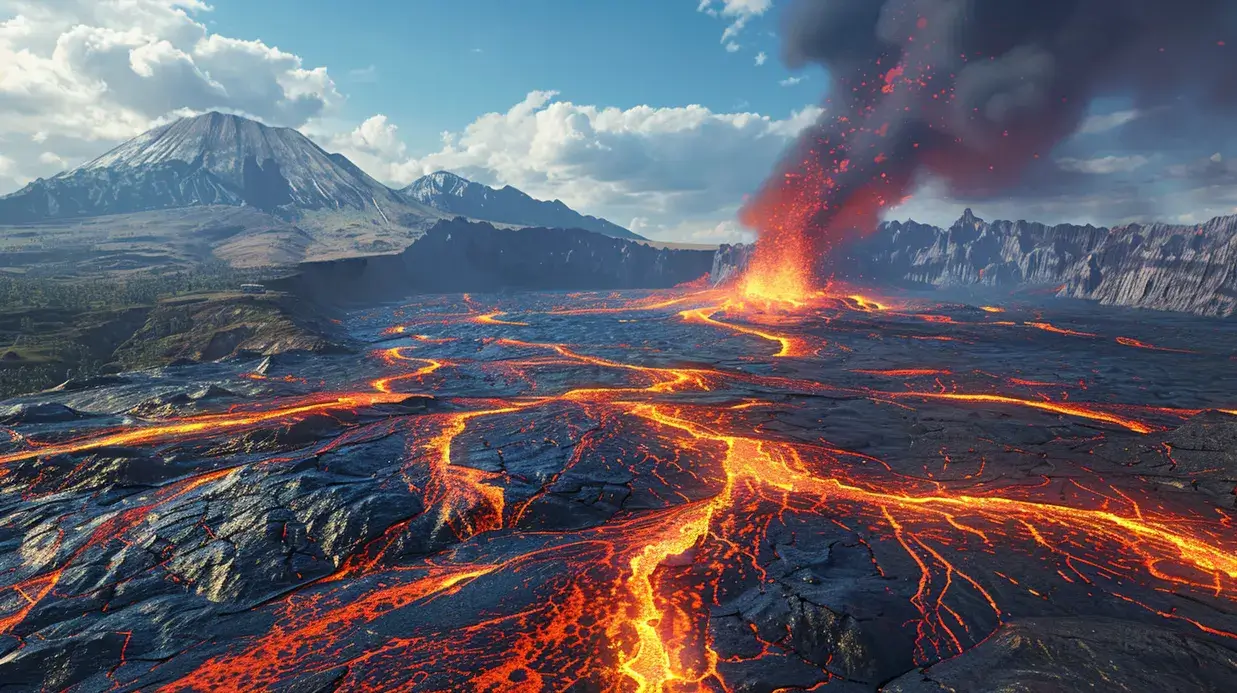The Deccan Traps, located in present-day India, were a series of massive volcanic eruptions that occurred around 66 million years ago. These eruptions covered an area larger than the size of France, releasing enormous amounts of lava and gases into the atmosphere. The timing of these eruptions coincided with the end of the Cretaceous period, a time when dinosaurs roamed the Earth.
| Key Effects of Deccan Traps on Ancient Life | Impact on Ecosystems |
|---|---|
| Atmospheric Changes | Global cooling, acid rain |
| Soil and Water Contamination | Acidification, reduced plant growth |
| Habitat Destruction | Ecosystem disruption, species displacement |
| Species Decline | Reduction in biodiversity |
| Long-term Environmental Changes | Climate alterations, ecosystem restructuring |
Deccan Traps Effect on Ancient Life
The Deccan Traps eruptions had far-reaching consequences for life on Earth. These volcanic events caused significant changes to the environment, affecting plants, animals, and entire ecosystems. Let’s explore how these eruptions impacted ancient life.
Atmospheric Changes
One of the most significant effects of the Deccan Traps eruptions was the dramatic change in Earth’s atmosphere. The volcanoes released massive amounts of gases and tiny particles into the air, altering the planet’s climate.
- Release of gases and particulates:
- Carbon dioxide: Trapped heat in the atmosphere
- Sulfur dioxide: Formed sulfuric acid in the atmosphere
- Ash and dust: Blocked sunlight from reaching Earth’s surface
- Global cooling and its effects:
- Reduced sunlight led to a drop in global temperatures
- Plants struggled to photosynthesize, affecting food chains
- Cold-sensitive species faced challenges surviving
The release of these gases and particles had a domino effect on life forms across the planet. Plants, being at the base of many food chains, were particularly affected by the reduced sunlight and cooler temperatures. This, in turn, impacted the animals that relied on these plants for food and shelter.
Soil and Water Contamination
The Deccan Traps eruptions didn’t just affect the air; they also had a significant impact on soil and water. As volcanic gases mixed with water in the atmosphere, they formed acid rain. This acidic precipitation fell back to Earth, causing widespread changes to terrestrial and aquatic environments.
Acidification of soil and water bodies:
- Soil pH levels decreased, making it more acidic
- Lakes, rivers, and even parts of the oceans became more acidic
- Minerals in the soil dissolved faster, changing nutrient availability
These changes had a profound effect on plant life and the animals that depended on them. Many plant species struggled to survive in the altered soil conditions, leading to changes in vegetation across vast areas.
Impact on plant growth and aquatic life:
The acidification of soil and water had far-reaching consequences for ecosystems:
- Plant growth slowed or stopped in many areas
- Acid-sensitive aquatic organisms, like shellfish, faced severe challenges
- Food chains were disrupted as primary producers struggled
Discover how volcanoes affect ocean acidity and its long-term impact on marine life.
Habitat Destruction
While the atmospheric and chemical changes caused by the Deccan Traps were widespread, the eruptions also had more localized, but equally devastating effects.
Direct destruction of ecosystems by lava flows
The massive lava flows from the Deccan Traps covered an enormous area, directly destroying habitats in their path. Forests were burned, grasslands were buried, and entire ecosystems were wiped out. This immediate destruction had severe consequences for the plants and animals living in these areas.
| Ecosystem Type | Impact of Lava Flows |
|---|---|
| Forests | Burned and buried, destroying habitats for countless species |
| Grasslands | Covered by lava, eliminating grazing areas for herbivores |
| Rivers and Lakes | Filled or redirected, disrupting aquatic ecosystems |
| Coastal Areas | Altered shorelines, affecting marine life |
Long-term changes in local environments
Even after the lava cooled, the affected areas remained drastically altered. The new volcanic landscape created different conditions that would take thousands of years to develop into new ecosystems. These changes included:
- Altered topography, creating new mountains and valleys
- Changes in local weather patterns due to new landforms
- Formation of new water bodies in cooled lava depressions
- Gradual colonization of lava fields by pioneer species
These long-term changes forced many species to adapt or migrate, reshaping the biodiversity of the affected regions for millions of years to come. The volcanic ash in dinosaur fossils provides evidence of these dramatic environmental changes and their impact on ancient life.
Evidence of Species Decline
The Deccan Traps eruptions left behind a wealth of fossil evidence that reveals the dramatic changes in plant and animal populations during this tumultuous time. By studying these fossils, scientists have pieced together a picture of widespread species decline across various groups of organisms.
Plant Species Affected
The plant world was hit hard by the environmental changes caused by the Deccan Traps eruptions. Fossil records show significant shifts in plant communities, with some groups thriving while others struggled to survive.
Changes in plant diversity and abundance:
- Overall reduction in plant species diversity
- Shift from forest-dominated landscapes to more open environments
- Increase in fern abundance (fern spike) immediately after major eruptions
- Decline in flowering plant diversity, especially in tropical regions
Specific examples of affected plant groups:
| Plant Group | Impact |
|---|---|
| Conifers | Many species declined, especially in areas directly affected by lava flows |
| Cycads | Significant reduction in diversity and abundance |
| Angiosperms | Variable effects, with some groups declining while others adapted |
| Ferns | Short-term increase followed by long-term changes in species composition |
The volcanic ash in dinosaur fossils often contains plant remains, providing valuable insights into these changes in vegetation.
Animal Species Impacted
The effects of the Deccan Traps eruptions rippled through the animal kingdom, causing significant population declines across various groups.
Decline in dinosaur populations:
Dinosaurs, the dominant land animals of the time, were severely affected by the environmental changes. Fossil evidence suggests:
- Reduced diversity of dinosaur species in the late Cretaceous
- Changes in dinosaur body sizes, with a trend towards smaller individuals
- Alterations in dinosaur geographic distributions
These changes likely resulted from the combined effects of habitat loss, climate change, and food chain disruptions caused by the Deccan Traps eruptions. The question of whether Deccan Traps killed dinosaurs remains a topic of ongoing scientific debate.
Effects on other animal groups:
While dinosaurs often take center stage, other animal groups were also significantly impacted:
- Mammals: Many small, nocturnal mammals survived better than larger animals, possibly due to their ability to burrow and hibernate.
- Reptiles: Aquatic reptiles like mosasaurs and plesiosaurs faced severe challenges due to ocean acidification and changes in marine food webs.
- Birds: Early bird species were affected, but some groups managed to survive and later diversified.
- Insects: Some insect groups thrived in the aftermath of the eruptions, while others declined.
The fossil record shows a complex pattern of extinctions and survivals across different animal groups. This evidence highlights the far-reaching effects of the Deccan Traps eruptions on the entire ecosystem of the late Cretaceous period.
Adaptations to Volcanic Activity
While the Deccan Traps eruptions caused widespread devastation, some species managed to survive and even thrive in the altered environments. These survivors demonstrate the remarkable adaptability of life in the face of extreme challenges.
Plant Adaptations
Plants, being at the base of most food chains, played a crucial role in the recovery of ecosystems after the Deccan Traps eruptions. Some plant species were better equipped to handle the new conditions, leading to changes in the composition of plant communities.
Examples of plants that thrived in post-eruption environments:
- Ferns: These ancient plants experienced a brief period of dominance immediately after major eruptions, known as the “fern spike.”
- Early angiosperms: Some flowering plants adapted quickly to the changing conditions, setting the stage for their later diversification.
- Certain conifers: Some conifer species proved resilient to the volcanic effects, particularly in higher latitude regions.
Evolutionary changes in response to new conditions:
Plants developed various adaptations to survive in the post-eruption world:
- Improved tolerance to acidic soils
- Enhanced ability to photosynthesize in low-light conditions
- More efficient water use in drought-prone areas
- Faster growth rates to colonize newly exposed land
These adaptations highlight how volcanoes affect evolution by creating new selective pressures on plant species.
Animal Adaptations
Animals faced numerous challenges in the wake of the Deccan Traps eruptions, but some species developed remarkable adaptations that allowed them to survive and even thrive in the changed environments.
Behavioral and physiological adaptations:
| Adaptation Type | Examples |
|---|---|
| Dietary Flexibility | Ability to consume a wider variety of foods |
| Improved Thermoregulation | Better control of body temperature in cooler climates |
| Enhanced Respiratory Systems | Ability to breathe in ash-filled air more effectively |
| Burrowing Behavior | Seeking shelter underground from harsh conditions |
Examples of species that showed resilience:
- Small mammals: Many early mammal species survived by utilizing their ability to burrow and enter states of torpor or hibernation.
- Crocodilians: These reptiles demonstrated remarkable resilience, likely due to their semi-aquatic lifestyle and ability to survive on minimal food for extended periods.
- Certain bird species: Some early birds managed to survive, possibly due to their ability to fly and exploit new ecological niches.
- Insects: Many insect species adapted quickly to the changed environments, with some groups experiencing rapid diversification in the aftermath of the eruptions.
These adaptations demonstrate the incredible resilience of life in the face of catastrophic events. By studying how ancient species responded to the Deccan Traps eruptions, we gain valuable insights into how modern species might adapt to rapid environmental changes.
Long-Term Environmental Changes
The Deccan Traps eruptions left an indelible mark on Earth’s environment, with effects that persisted long after the last lava flows cooled. These lasting changes reshaped the planet’s climate and ecosystems, setting the stage for the evolution of life in the post-Cretaceous world.
Climate Alterations
The massive release of gases and particles from the Deccan Traps had far-reaching consequences for Earth’s climate system. These effects unfolded over thousands of years, leading to significant shifts in global temperature and weather patterns.
Long-term cooling or warming trends:
Initially, the eruptions caused a period of global cooling due to the sun-blocking effects of volcanic ash and sulfur aerosols. This cooling phase, known as a volcanic winter, may have lasted for several years or even decades.
However, as the short-term cooling effects waned, the long-term impacts of greenhouse gases like carbon dioxide began to dominate. This led to a gradual warming trend that persisted for thousands of years after the eruptions ceased.
Changes in precipitation patterns:
The climate alterations caused by the Deccan Traps also affected global precipitation patterns:
- Increased rainfall in some regions due to warmer temperatures and higher evaporation rates
- Extended droughts in other areas as atmospheric circulation patterns shifted
- More extreme weather events, including intense storms and floods
These changes in temperature and precipitation had profound effects on the distribution of plants and animals, driving migrations and extinctions across the globe.
Ecosystem Restructuring
As the climate changed and species adapted or went extinct, the Deccan Traps eruptions set in motion a major restructuring of Earth’s ecosystems.
Shift in dominant species:
The post-eruption world saw significant changes in the dominant species across various ecosystems:
- Decline of large dinosaurs and the rise of smaller, more adaptable species
- Increased prominence of flowering plants in many terrestrial ecosystems
- Changes in marine food webs as some plankton groups declined while others thrived
This shift in dominant species altered the fundamental structure of food webs and energy flow through ecosystems.
New ecological niches and relationships:
As environments changed and some species disappeared, new opportunities emerged for surviving organisms:
| Ecological Change | Example |
|---|---|
| New feeding strategies | Development of specialized diets to exploit changed food resources |
| Novel symbiotic relationships | Emergence of new plant-pollinator interactions |
| Colonization of new habitats | Species moving into areas previously unsuitable for them |
These ecosystem changes set the stage for the rapid diversification of surviving groups, including mammals and birds, in the early Cenozoic era. The volcanoes at end of Cretaceous played a crucial role in shaping the world we see today, demonstrating the profound and lasting impact of large-scale volcanic events on Earth’s biosphere.
Deccan Traps vs. Other Extinction Events
The Deccan Traps eruptions occurred during a time of significant environmental change on Earth, coinciding with the end-Cretaceous mass extinction. To understand their unique impact, it’s helpful to compare them with other major extinction events and volcanic episodes in Earth’s history.
Comparison with the K-Pg impact event:
While the Deccan Traps played a crucial role in shaping late Cretaceous environments, they weren’t the only major event affecting life at this time. The Cretaceous-Paleogene (K-Pg) impact event, caused by a massive asteroid strike, is often considered the primary cause of dinosaur extinction. Here’s how these events compare:
| Aspect | Deccan Traps | K-Pg Impact |
|---|---|---|
| Duration | Occurred over hundreds of thousands of years | Instantaneous event with long-lasting effects |
| Global Effects | Gradual climate change and habitat alteration | Rapid, severe global climate disruption |
| Species Impact | Gradual decline of many species | Sudden, widespread extinctions |
The interplay between these two events likely contributed to the severity of the end-Cretaceous extinction, with the Deccan Traps potentially making ecosystems more vulnerable to the sudden shock of the impact event.
Similarities and differences with other major volcanic events:
The Deccan Traps were not unique in Earth’s history. Other large igneous provinces have formed at various times, each with its own impact on global environments and life. Some notable examples include:
- Siberian Traps (252 million years ago): Associated with the end-Permian extinction, the largest known mass extinction in Earth’s history.
- Central Atlantic Magmatic Province (201 million years ago): Linked to the end-Triassic extinction.
- North Atlantic Igneous Province (56 million years ago): Connected to the Paleocene-Eocene Thermal Maximum, a period of rapid global warming.
While these events share similarities in their scale and potential for global impact, each occurred in a unique geological and ecological context, leading to different outcomes for life on Earth.
The Deccan Traps Legacy
The Deccan Traps eruptions left an enduring legacy, profoundly influencing the course of evolution and shaping the world we see today.
How the eruptions shaped the path of evolution:
- Selective Pressures: The environmental changes caused by the Deccan Traps created new selective pressures, favoring species that could adapt to changing conditions. This led to the evolution of new traits and behaviors across various groups of organisms.
- Ecological Opportunities: As some species declined or went extinct, new ecological niches opened up. This paved the way for the rapid diversification of surviving groups, particularly mammals and birds, in the aftermath of the end-Cretaceous extinction.
- Geological Impacts: The vast lava flows created new landscapes and altered existing ones, influencing patterns of speciation and migration for millions of years to come.
- Climate Legacy: The long-term effects on global climate continued to shape evolutionary trajectories long after the eruptions ceased, influencing everything from body size to geographic distributions of species.
The Deccan Traps serve as a powerful example of how large-scale geological events can act as drivers of evolutionary change. By studying these ancient eruptions and their effects, we gain valuable insights into the complex interplay between Earth’s geological and biological systems.
Computer models of Deccan Traps help scientists better understand these long-term impacts, providing a window into how such massive volcanic events can shape the course of life on our planet.
In conclusion, the Deccan Traps effect on ancient life was profound and far-reaching. From altering global climate to reshaping ecosystems, these eruptions played a crucial role in one of the most significant transitions in Earth’s history. As we face modern environmental challenges, the lessons learned from studying the Deccan Traps and their impact on ancient life become increasingly relevant, offering insights into how life on Earth responds to and recovers from major environmental perturbations.

